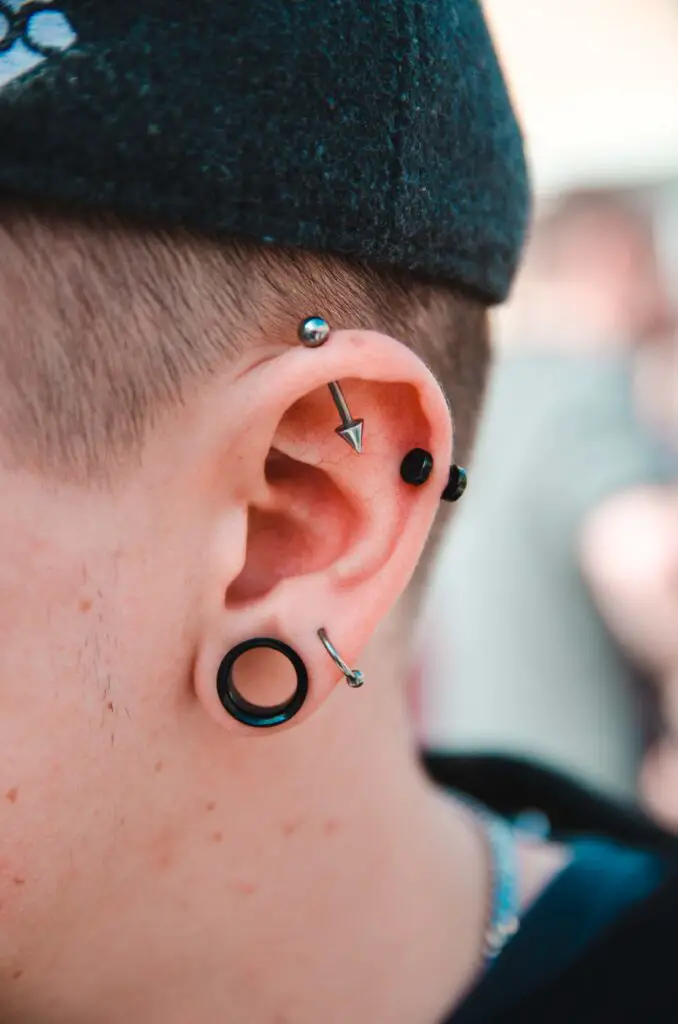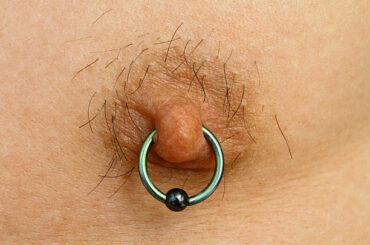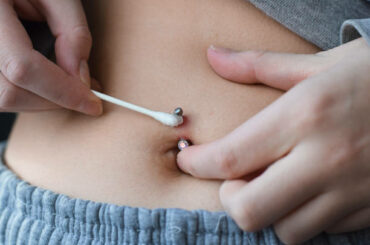Contents
Crooked helix piercing
Helix piercings, nestled along the upper outer rim of the ear, have emerged as a popular and timeless form of self-expression. With their versatility and aesthetic appeal, helix piercings offer individuals a unique canvas to showcase their style. However, within the realm of this ear modification, a specific challenge may arise—one that pertains to the alignment and straightness of the piercing itself. In this article, we delve into the captivating world of helix piercings, unraveling the intricacies surrounding the challenges and solutions associated with a crooked helix piercing. Whether you’re contemplating this fashionable adornment or currently navigating the nuances of a misaligned piercing, join us on a journey through the aesthetics, complexities, and remedies of the crooked helix piercing phenomenon.
Understanding Helix Piercings
Helix piercings, marked by their placement along the upper outer rim of the ear, have etched their presence as a classic and stylish form of body modification. This particular piercing targets the cartilage that extends along the upper curve of the ear, offering individuals a unique canvas for expression. The appeal of helix piercings lies not only in their strategic positioning but also in the aesthetic allure they bring to one’s overall look.
The upper outer rim of the ear provides an ideal location for helix piercings, allowing for a range of jewelry options to adorn this space. The versatility of helix piercings is noteworthy, as individuals can opt for subtle studs, elegant hoops, or even experiment with a curated combination of jewelry for a more eclectic appearance.
These piercings go beyond mere adornment; they serve as a form of self-expression, allowing individuals to showcase their personality and style. The helix, with its prominence and visibility, becomes a captivating focal point, drawing attention to the intricate details of the chosen jewelry.
As we navigate the intricacies of helix piercings, it becomes essential to appreciate their widespread popularity, not just as a trend but as a timeless and customizable accessory that has stood the test of evolving fashion preferences. Now, let us explore the challenges and solutions that may arise in the context of helix piercings, specifically focusing on the intriguing dynamics of a crooked helix piercing.

The Appeal of Helix Piercings
Helix piercings hold a unique allure that goes beyond the mere act of adorning the ear. Individuals opt for helix piercings for a myriad of reasons, each contributing to the overall charm and personal significance of this ear modification.
Aesthetics and Personal Expression:
One of the primary reasons individuals choose helix piercings is the aesthetic enhancement they provide. The upper outer rim of the ear, with its prominent cartilage, becomes a captivating canvas for self-expression. Helix piercings allow individuals to showcase their unique style, whether it’s through dainty studs, elaborate hoops, or a combination of various jewelry pieces.
The ability to customize the look and feel of the piercing adds a personal touch. From minimalist designs for a subtle elegance to bold, statement-making jewelry choices, helix piercings offer a versatile platform for individuals to express their personalities and preferences.
Cultural and Fashion Significance:
Helix piercings have ingrained themselves in both cultural and fashion realms. Across various cultures, ear piercings have been a symbol of identity, tradition, or even rites of passage. Helix piercings, with their contemporary appeal, seamlessly blend tradition with modern aesthetics.
In the fashion landscape, helix piercings have become a staple accessory, gracing the ears of fashion enthusiasts and trendsetters alike. Whether featured on the runway or embraced by influencers on social media platforms, helix piercings have cemented their place as a chic and fashionable choice.
Versatility in Styling:
Another aspect that adds to the appeal of helix piercings is the versatility they offer in styling. The choice of jewelry, ranging from simple studs to intricate cuffs, allows for endless possibilities. This adaptability enables individuals to curate a look that suits various occasions, moods, or fashion statements.
As we delve into the captivating world of helix piercings, it becomes evident that their appeal extends beyond the physical act of piercing. They serve as a dynamic form of self-expression, blending aesthetics, cultural significance, and fashion-forward choices. However, amidst the beauty of helix piercings, challenges may arise, and in this article, we focus on unraveling the complexities surrounding the phenomenon of a crooked helix piercing.
Causes of a Crooked Helix Piercing
While helix piercings are celebrated for their aesthetic appeal and versatility, the unfortunate occurrence of a crooked helix piercing can dampen the experience. Understanding the potential causes behind a misaligned helix piercing is crucial for addressing the issue effectively. Here, we delve into the various factors that may contribute to a helix piercing appearing crooked:
Anatomy Variation:
One of the primary contributors to a crooked helix piercing is the natural variation in ear anatomy. Ears come in diverse shapes and sizes, and the curvature of the upper outer rim can differ significantly from person to person. This variation may pose challenges during the piercing process, leading to a misalignment of the jewelry.
Piercing Inaccuracies:
The precision required for helix piercings makes the process susceptible to inaccuracies. If the piercer does not carefully assess the ear’s anatomy or makes a miscalculation during the piercing procedure, it can result in the jewelry appearing crooked. Opting for an experienced and skilled piercer minimizes the risk of inaccuracies.
Issues During the Healing Process:
The healing process plays a pivotal role in the final positioning of the helix piercing. If there are complications such as excessive movement, trauma, or improper aftercare, the healing tissue may react by adjusting the position of the jewelry. This can lead to the appearance of a crooked helix piercing.
Uneven Cartilage Structure:
The cartilage along the upper outer rim of the ear is not always uniform. Variations in cartilage structure can impact how the piercing heals and may contribute to the jewelry taking on a slightly different angle than intended.
Pressure or Trauma:
External factors such as pressure, accidental knocks, or trauma to the piercing site can influence the alignment of the helix jewelry. If the ear experiences consistent pressure or impact, the healing process may be disrupted, potentially causing the piercing to appear crooked.
Inadequate Piercing Techniques:
In some cases, a crooked helix piercing may be attributed to inadequate piercing techniques. This could involve using improper tools, incorrect angles, or insufficient attention to detail during the piercing procedure.
Recognizing these potential causes underscores the importance of choosing a professional piercer, understanding individual anatomy, and prioritizing proper aftercare. In the following sections, we will explore solutions and considerations for addressing a crooked helix piercing, ensuring a positive and aesthetically pleasing outcome.
Professional Piercing Techniques
The journey to a flawless helix piercing begins with a critical decision: the choice of a piercer. Opting for a skilled and experienced professional is not merely a matter of preference but a pivotal step in ensuring the accuracy and alignment of the helix jewelry. Here, we emphasize the indispensable role of professional piercing techniques in achieving precise placement and minimizing the likelihood of a crooked helix piercing.
Importance of Choosing a Skilled Piercer:
Selecting a piercer with a proven track record of expertise in helix piercings is paramount. Skilled piercers possess a comprehensive understanding of ear anatomy, allowing them to navigate the intricacies of individual variations and contours.
Accurate Assessment of Ear Anatomy:
Professional piercers embark on the piercing process with a thorough assessment of the client’s ear anatomy. This includes considering the curvature, thickness, and unique features of the upper outer rim. Accurate evaluation lays the foundation for precise piercing placement, reducing the risk of misalignment.
Proper Tools and Techniques:
Skilled piercers utilize industry-standard tools and techniques to ensure the accuracy of the piercing procedure. From choosing the right needle size to employing proper angles during the piercing, these professionals adhere to stringent standards that contribute to the success of the helix piercing.
Minimizing Discomfort and Trauma:
A skilled piercer understands the importance of minimizing discomfort and trauma during the piercing process. By employing gentle techniques and efficient methods, they create an environment conducive to optimal healing, reducing the likelihood of complications that may lead to a crooked helix piercing.
Clear Communication with Clients:
Professional piercers prioritize clear communication with their clients. Before initiating the piercing, they discuss expectations, jewelry options, and any concerns the individual may have. This ensures a collaborative approach, aligning the final result with the client’s vision.
Commitment to Aftercare Education:
Beyond the piercing procedure, professional piercers are committed to aftercare education. They provide clients with comprehensive guidelines on how to care for their helix piercing, emphasizing the role of proper aftercare in promoting healing and preventing issues like misalignment.
Choosing a skilled and experienced piercer is an investment in the overall success of the helix piercing journey. In the subsequent sections, we will explore how professional techniques, combined with attentive aftercare, contribute to the prevention and resolution of challenges associated with a crooked helix piercing.

Healing Process and Aftercare
The journey towards a beautifully adorned helix piercing extends well beyond the moment of piercing. The healing process is a pivotal phase that demands attention, care, and a commitment to aftercare practices. Understanding the critical role of proper aftercare is essential not only for the overall health of the piercing but also for minimizing the risk of misalignment, ensuring the jewelry settles into its intended position.
Importance of Proper Aftercare:
The healing process of a helix piercing is influenced significantly by the aftercare it receives. Proper aftercare serves as a protective shield, safeguarding the delicate piercing site from potential complications that could lead to misalignment.
Gentle Cleaning Routine:
A gentle cleaning routine is fundamental to helix piercing aftercare. Using a saline solution or an aftercare solution recommended by the piercer, cleanse the piercing site regularly. This helps prevent the buildup of debris or bacteria that could interfere with the healing process.
Avoiding Excessive Movement:
Excessive movement of the jewelry during the initial healing period can disrupt the delicate tissue, potentially leading to misalignment. Minimize unnecessary touching, twisting, or turning off the jewelry to promote a stable healing environment.
Choosing Appropriate Jewelry:
The choice of jewelry plays a role in the healing process. Opt for high-quality, hypoallergenic materials that reduce the risk of irritation or reactions. Additionally, ensure that the jewelry size and style align with your comfort and the recommendations of your piercer.
Protecting from Trauma:
Be mindful of activities that may expose the piercing to trauma. Avoid sleeping on the side of the helix piercing, and take precautions during activities where the ear might come into contact with objects or surfaces.
Regular Check-Ins with the Piercer:
Schedule regular check-ins with your piercer to monitor the healing progress. Professional guidance allows for timely adjustments if needed, to address any signs of potential misalignment before they become pronounced.
Patience and Consistency:
Healing times vary, but maintaining a consistent aftercare routine, even after the initial healing period, ensures the long-term well-being of the helix piercing.
By incorporating these aftercare practices into your routine, you contribute to the stability and alignment of your helix piercing. In the subsequent sections, we will explore signs and potential causes of a crooked helix piercing, shedding light on how a proactive approach to aftercare can play a crucial role in mitigating these challenges.
Signs and Symptoms of a Crooked Helix Piercing
As you embark on the journey of helix piercing, being attuned to the subtle signs and symptoms of a potential misalignment is paramount. Recognizing these indicators early on allows for proactive measures and timely intervention. Here, we outline common signs that may suggest a helix piercing is veering off course, emphasizing the importance of vigilance in ensuring the jewelry settles into its intended position:
Off-Center Jewelry Placement:
One of the primary visual cues of a crooked helix piercing is the off-center placement of the jewelry. If the earring appears to deviate from the desired alignment along the upper outer rim, it may indicate misalignment.
Uneven Healing and Redness:
Uneven healing or persistent redness around the piercing site can be indicative of a misaligned helix piercing. While some redness is normal during the initial healing stages, prolonged or uneven redness may signal an issue.
Discomfort or Pain:
Increased discomfort or pain, especially beyond the initial stages of healing, may suggest that the jewelry is not sitting correctly. Any sharp or prolonged pain should be addressed promptly.
Asymmetry in Piercing Angle:
A well-placed helix piercing maintains symmetry with the natural contours of the ear. If there is an apparent asymmetry in the angle of the piercing, it may signify misalignment.
Difficulty Inserting or Removing Jewelry:
If inserting or removing the jewelry feels challenging or if there is resistance, it could be an indication of misalignment. Smooth and painless movement of the jewelry is a positive sign of proper alignment.
Visible Tilt or Slant:
A visible tilt or slant of the jewelry, especially when viewed from different angles, may suggest misalignment. Pay attention to how the earring aligns with the curvature of the upper outer rim.
Persistent Swelling or Irritation:
While some swelling is normal during the initial healing period, persistent or recurrent swelling may signal a misaligned helix piercing. This can be accompanied by ongoing irritation or sensitivity.
Encouraging readers to be vigilant and proactive in recognizing these signs allows for early identification of potential issues. Timely attention to these indicators enhances the likelihood of addressing misalignment before it becomes pronounced. In the following sections, we will explore steps and considerations for addressing a crooked helix piercing and restoring optimal alignment.
Consulting with a Professional for Assessment
Navigating the intricacies of a potential misalignment in your helix piercing requires a strategic and informed approach. If you suspect that your helix piercing may be veering off course or displaying signs of misalignment, it is strongly advised to seek the expertise of your professional piercer. Here, we underscore the importance of consulting with a professional for a comprehensive assessment and guidance on potential solutions:
Timely Intervention for Optimal Results:
Promptly consulting with your piercer at the first sign of suspicion is crucial for achieving optimal results. Timely intervention allows the piercer to assess the situation early, potentially mitigating issues before they escalate.
Professional Eye and Experience:
Your piercer possesses a professional eye and years of experience in the field. Their trained perspective enables them to evaluate the alignment, positioning, and overall health of your helix piercing accurately. Relying on their expertise ensures a thorough assessment.
Customized Solutions for Individual Cases:
Each helix piercing is unique, and potential misalignments may stem from various factors. Consulting with your piercer allows for a personalized evaluation, leading to customized solutions tailored to address the specific challenges associated with your piercing.
Identification of Potential Causes:
Professional piercers are adept at identifying potential causes of misalignment, whether they stem from anatomy variations, healing complications, or other factors. Understanding the root cause is essential for implementing effective solutions.
Adjustments and Realignments:
In many cases, misalignments can be addressed through adjustments or realignments performed by a professional piercer. This may involve changing the jewelry, making slight modifications, or recommending specific aftercare practices to encourage proper healing.
Prevention of Further Complications:
Seeking professional advice not only addresses current concerns but also prevents the escalation of potential complications. Early intervention minimizes the risk of persistent issues and contributes to a positive healing trajectory.
Clear Communication and Guidance:
Consulting with your piercer fosters clear communication. Your piercer can provide insights into the current status of your helix piercing, offer guidance on aftercare modifications, and ensure that you are well informed about the steps to be taken.
Emphasizing the importance of consulting with a professional piercer underscores the proactive approach necessary for addressing a crooked helix piercing. In the subsequent sections, we will explore potential correction methods and considerations to guide individuals through the journey of restoring optimal alignment to their helix piercings.

Potential Correction Methods
Addressing a crooked helix piercing requires precision, expertise, and a careful approach. While misalignments are not uncommon, attempting corrections at home poses significant risks and may lead to complications. Here, we explore potential methods for correcting a crooked helix piercing, emphasizing that this process should exclusively be undertaken by a professional piercer:
Professional Assessment:
The correction journey begins with a thorough professional assessment. Your piercer will carefully evaluate the alignment, identify the factors contributing to misalignment, and determine the most suitable course of action.
Jewelry Adjustment or Replacement:
One common method employed by professional piercers is adjusting or replacing the existing jewelry. This may involve selecting a different earring style, changing the size, or modifying the angle to encourage proper alignment.
Slight Repositioning:
Professional piercers possess the expertise to perform slight repositioning of the jewelry. This delicate process requires precision to ensure that the earring aligns seamlessly with the natural contours of the ear.
Consultation on Healing Progress:
An integral part of the correction process involves ongoing consultation on the healing progress. Your piercer will monitor how the piercing responds to adjustments, making informed decisions based on the individual characteristics of your helix piercing.
Avoiding DIY Corrections:
It cannot be stressed enough that attempting corrections at home is strongly discouraged. DIY attempts, such as twisting or repositioning the jewelry without professional guidance, can lead to complications, increased pain, and further misalignment.
Minimizing Risks of Infection or Trauma:
Professional piercers are equipped to minimize the risks of infection or trauma during the correction process. They adhere to stringent hygiene practices and employ techniques that prioritize the well-being of the piercing.
Patient-Centric Approach:
Correcting a crooked helix piercing requires a patient-centric approach. Your piercer will guide you through the process, addressing concerns, providing aftercare recommendations, and ensuring that each step contributes to the gradual restoration of optimal alignment.
Cautioning against DIY corrections serves as a crucial reminder that the expertise of a professional piercer is indispensable in navigating the complexities of realigning a helix piercing. In the following sections, we will delve into the importance of patience in the healing journey and the potential risks associated with attempting corrections at home.
Patience in the Healing Journey
As you embark on the path to correct a crooked helix piercing, the virtue of patience becomes a guiding force. The healing journey is a dynamic process, and variations during the initial stages are not uncommon. Here, we reiterate the essential need for patience and emphasize that seeking professional guidance is paramount in navigating the intricacies of the healing journey:
Understanding Healing Timelines:
Helix piercings, like any form of body modification, follow unique healing timelines. While some individuals may experience swift healing, others may encounter variations that contribute to the perception of misalignment. Understanding these timelines is crucial for setting realistic expectations.
Resisting Impulsive Actions:
Patience entails resisting impulsive actions, especially during the initial stages of healing. The desire for immediate results may lead to unnecessary adjustments or attempts at correction. It is vital to allow the piercing to undergo its natural healing process.
Professional Monitoring and Adjustments:
Professional piercers play a central role in the ongoing monitoring and adjustments required during the healing journey. Patience aligns with trusting the expertise of your piercer and allowing them to guide the correction process based on the individual characteristics of your helix piercing.
Addressing Concerns with Professional Guidance:
If concerns arise during the healing process, it is essential to address them with professional guidance. Expressing your observations and seeking clarification from your piercer ensures that any perceived misalignment is evaluated and managed with precision.
Varied Healing Experiences:
Variations in healing experiences are part of the norm. Factors such as individual anatomy, lifestyle, and adherence to aftercare practices contribute to unique healing journeys. Patience involves acknowledging these differences and embracing the diversity of healing experiences.
Avoiding Hasty Decisions:
Hasty decisions can impede the healing process. Patience encourages a measured approach, allowing corrections and adjustments to be made judiciously and under the guidance of a professional piercer. Avoiding hasty decisions minimizes the risk of complications.
Embracing the Gradual Progress:
Patience is the companion of gradual progress. Recognize and celebrate the small milestones in the correction journey. Each step, when approached with patience, contributes to the overall success of restoring optimal alignment to your helix piercing.
By reiterating the need for patience during the healing journey, we underscore the importance of adopting a calm and informed approach. The guidance of a professional piercer remains instrumental in navigating the nuanced phases of correction and ensuring that the healing process unfolds optimally. In the subsequent sections, we will explore potential risks associated with attempting corrections at home and emphasize the significance of responsible decision-making in the context of a crooked helix piercing.
Risks of DIY Corrections
While the desire to correct a crooked helix piercing is understandable, attempting DIY corrections poses significant risks that can compromise the healing process. Here, we highlight potential dangers associated with self-directed efforts and stress the critical importance of professional oversight to ensure a safe and effective healing journey:
Increased Risk of Infection:
DIY corrections, such as manipulating the jewelry or attempting repositioning without professional guidance, significantly increase the risk of infection. Unsterilized tools or unclean hands can introduce harmful bacteria, jeopardizing the delicate healing environment.
Exacerbation of Pain and Discomfort:
Improper DIY corrections can exacerbate pain and discomfort. The delicate healing tissue may be subjected to unnecessary trauma, leading to heightened sensitivity, increased swelling, and prolonged discomfort.
Compromised Healing Process:
Attempting corrections at home can compromise the natural healing process of the helix piercing. The body responds to trauma by initiating inflammatory responses, and unguided interventions may disrupt the orderly progression of healing.
Potential Damage to Tissues:
DIY corrections carry the risk of causing unintended damage to the tissues surrounding the piercing site. Misdirected efforts can result in tears, bruising, or other forms of trauma that impede the overall health of the piercing.
Introduction of Foreign Objects:
Untrained attempts at correction may inadvertently introduce foreign objects into the piercing site. This includes accidental pushing or pulling, leading to the lodging of jewelry or other materials in the wound, posing a serious risk of complications.
Unintended Changes to Jewelry:
DIY corrections may result in unintended changes to the jewelry, such as bending or warping. Altered jewelry can pose challenges to the healing process and may necessitate professional intervention to rectify.
Delayed Healing and Prolonged Discomfort:
Rather than expediting the healing process, DIY corrections may lead to delayed healing and prolonged discomfort. The piercing site requires a stable and controlled environment for optimal recovery, which is best achieved under the guidance of a professional piercer.
Stressing the Importance of Professional Oversight:
The risks associated with DIY corrections underscore the critical importance of professional oversight. Professional piercers possess the expertise, tools, and knowledge to navigate the complexities of realigning a helix piercing safely. Entrusting the correction process to a professional ensures a controlled and controlled approach that minimizes risks and maximizes the likelihood of a successful outcome.
In the upcoming sections, we will delve into responsible decision-making and guide how to proceed if a crooked helix piercing requires correction. Understanding the role of responsible actions contributes to the overall well-being of the piercing and fosters a positive healing experience.

Conclusion
In the intricate world of helix piercings, the journey toward correcting a crooked alignment demands a delicate balance of patience, professional guidance, and responsible decision-making. As we conclude this exploration into the nuances of managing a crooked helix piercing, let’s recap the key points discussed:
Understanding Helix Piercings:
Helix piercings, positioned along the upper outer rim of the ear, serve as a canvas for self-expression and aesthetic enhancement. Their appeal lies in the versatility, cultural significance, and fashion-forward choices they offer.
Causes of a Crooked Helix Piercing:
A crooked helix piercing may result from factors such as anatomy variation, inaccuracies during the piercing process, issues during the healing process, uneven cartilage structure, or external trauma.
Professional Piercing Techniques:
Choosing a skilled and experienced piercer is crucial for accurate placement and reducing the likelihood of a crooked helix piercing. Professional techniques involve accurate assessment of ear anatomy, the use of proper tools, and a commitment to aftercare education.
Healing Process and Aftercare:
Proper aftercare is essential for the healing process of helix piercings. Practices such as gentle cleaning, avoiding excessive movement, and choosing appropriate jewelry contribute to a successful healing journey.
Signs and Symptoms of a Crooked Helix Piercing:
Being vigilant about signs such as off-center jewelry placement, uneven healing, discomfort, or visible tilt is crucial for early detection of a potential misalignment.
Consulting with a Professional for Assessment:
Seeking professional advice for a comprehensive assessment is paramount. Professional piercers possess the expertise to identify potential causes, make adjustments, and guide individuals through the correction process.
Patience in the Healing Journey:
Patience is a guiding virtue during the healing journey. Variations are common, and allowing the piercing to undergo its natural healing process, coupled with professional oversight, contributes to a positive outcome.
Risks of DIY Corrections:
DIY corrections pose significant risks, including increased risk of infection, exacerbation of pain, compromised healing, potential damage to tissues, introduction of foreign objects, unintended changes to jewelry, and delayed healing.
Conclusion and Responsible Decision-Making:
As we wrap up, it is crucial to emphasize responsible decision-making. Entrusting the correction process to a professional piercer ensures a safe and effective journey toward restoring optimal alignment to a crooked helix piercing.
In conclusion, we encourage readers to prioritize their ear health, seek professional advice, and adhere to proper aftercare practices. A successful helix piercing experience is not just about the jewelry but about fostering a positive relationship with your piercer, understanding the unique aspects of your body, and embracing the transformative journey of self-expression through this captivating form of adornment.





